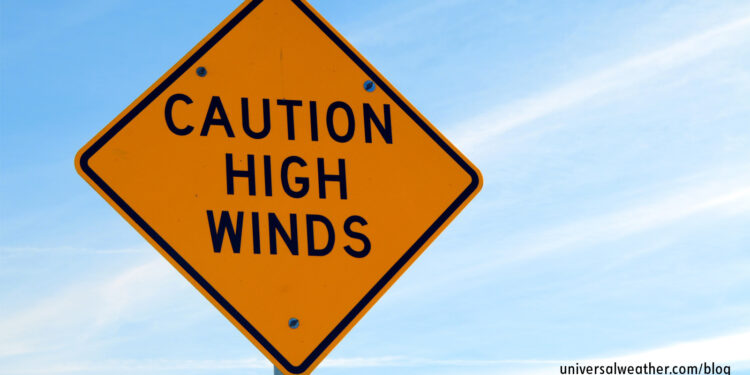Crosswinds and Their Effect on Flight – Part One: Enroute Impacts

Crosswinds are winds that come at an angle to your aircraft in flight and on approach/takeoff, and they can impact your flight operations, fuel burn, and passenger comfort. It’s always important to consider the crosswind potential in your pre-trip planning – especially for required fuel loads, tech stops and alternate planning.
The following is an overview of what you need to know:
1. Crosswinds impact operations at altitude
When you are faced with crosswinds along your anticipated route of flight, knowing the crosswind component will help you calculate fuel requirements. It’s important to ensure that proper fuel amounts are uplifted based on the wind component of your flight plan. If you’re operating near the jet stream, crosswinds can have a major impact. When you cross the North Atlantic or North Pacific area, the polar jet can often exceed 120 knots during the late winter or early spring months, and the jet stream over the north Pacific region can often exceed 200 knots.
2. Avoiding turbulence at altitude
Avoiding in-flight turbulence is a major operator consideration. Many operators want to avoid turbulence at all costs. A shear value of 5 may be the highest some operators will accept. Best practice is to look at weather patterns two to three days out and determine how forecasted weather systems will impact your flight and specifically the jet stream. Particularly with tailored aviation weather briefs, you’ll be well positioned to determine best route of flight and tech stop locations. Depending on the part of the world you’re operating to, planning for turbulence avoidance may involve revising overflight permits prior to operation. This requires additional advance planning, as international overflight permits may be difficult to obtain on the day of flight.
3. Determining strength and direction of wind
Upper wind readings are taken from 1) Pibal (weather balloons that send back information to the observer) from various stations in the world and 2) pilot reports (PIREPS). This information is programmed into a weather model to determine direction, strength, and movement of future upper winds and jet streams. Over recent years weather models have become very good at predicting movement of jet streams. In the geostrophic (frictionless) layer (300-150 millibars), winds do not change readily from day to day and can be accurately calculated. If the pilot is attempting to calculate the crosswind component for arrival or departure, consulting the latest surface observation for the airport will provide existing conditions. Also, the terminal forecast will provide a good assessment of proposed wind direction and speed so that the pilot can accurately calculate his crosswind factor.
4. Check your flight plan and terminal area forecasts
Wind components are noted on flight plans. Many flight plans also include wind shear values. As mentioned earlier, the wind component is instrumental in calculating fuel for the operation, and higher shear values indicate areas of the route where there is a better chance of encountering turbulence. Shear values on a flight plan are calculated by analyzing the change of wind direction and speed between relative layers of the atmosphere. Low-level turbulence and crosswind factors are obtained from surface observations and terminal forecast for the select aerodrome, which will be discussed further in part two of this article.
Conclusion
Crosswinds at altitude are not a safety concern but do impact fuel burn, range, and passenger comfort. Particularly if you have passengers sensitive to turbulence, it’s important to begin looking at upper-level winds two to three days out and to consider obtaining additional permits that may be required to enable an alternate routing or tech stops to your planned destination.
Stay tuned for Part 2, which covers the crosswind impact for arrivals and departures.
Questions?
If you have any questions about this article or have other questions about aviation weather, contact me at davehoule@univ-wea.com.



